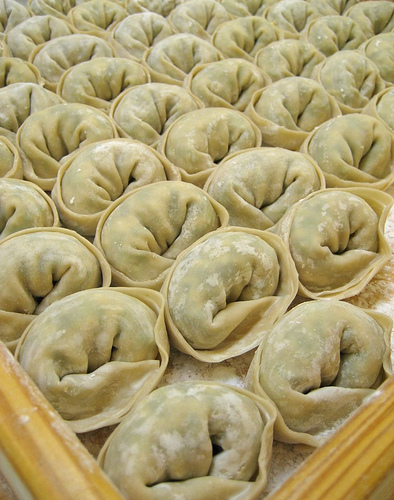
There are as many recipes for mandu as there are families who make it. And in South Korea, that’s just about all of them. Made with vegetables, meat, or tofu, then steamed, fried, or boiled in soup, the dumplings are a centuries-old tradition here, or as Bockhee Lee puts it, “I can’t say for sure when it started, but from my great-great-great-great-grandfather, everybody loved mandu.’’
In fact they probably started with the Mongols, who are believed to have brought the dumplings to Korea when they invaded in the 14th century. They’ve taken many different forms since then: grilled or fried as gunmandu; stewed with beef broth and rice cakes as teokmanduguk; or wrapped with paper-thin slices of fresh fish instead of dough as eomandu, “Royal Palace-style.’’
The fillings can range just as widely: kimchee, the traditional fermented cabbage with hot red pepper paste; vegetables only, in the Buddhist temples; pheasant and beef, as made for the court; or a mix of any or all of the above. Lee likes a combination of meat, tofu, and vegetables — “it’s perfect nutrition,’’ she says — but adds, “There’s no right recipe, and no right amount of anything. Use the most of what you love most.’’
Mandu are eaten all over Korea during the New Year’s holidays, both Jan. 1 and the movable Lunar New Year, but they’re popular year-round. Lee learned to make mandu where she says most Koreans do: in her family kitchen, without a recipe. “I watched my mother make it since I was sitting on the floor. It’s a family tradition,’’ she says. “Traditionally Korean men don’t help out at home, but my father loved it so much he didn’t mind making mandu pe’’ — literally “mandu skin,’’ the labor-intensive dough. “My mother would mix, my father would roll, my sister would press the rounds, and my brother and I would shape it. It’s a good family workshop.’’
Nowadays, she says, “we don’t do that much labor.’’ Mandu pe are sold in just about every grocery here (and in most Asian and Korean markets in America). But it’s still a family project, with children pitching in to stuff and fold the dumplings. Lee’s sons help her now.
“Sometimes kids use the mandu pe like Play-Doh. They make weird things, like animal shapes,’’ she says.
In defense of the kids, forming mandu (except for the simple half-moon shapes) is harder than you’d think, but Lee, who says she’s “just a housewife, not a professional,’’ folds the pe rounds into pleated crescents in seconds. She says the trick is laying the skins in the palm of the hand, pressing out the air as you fold them, and dampening the edge of the dough with water before pressing the edges together.
For the children’s efforts, she says, there is one rule. “Mothers always assign each boy the shape that he made. ‘You made it, you eat it.’ ’’
Source: The Boston Globe




